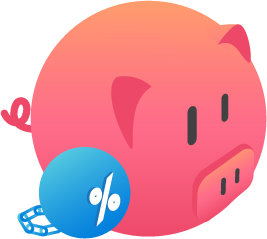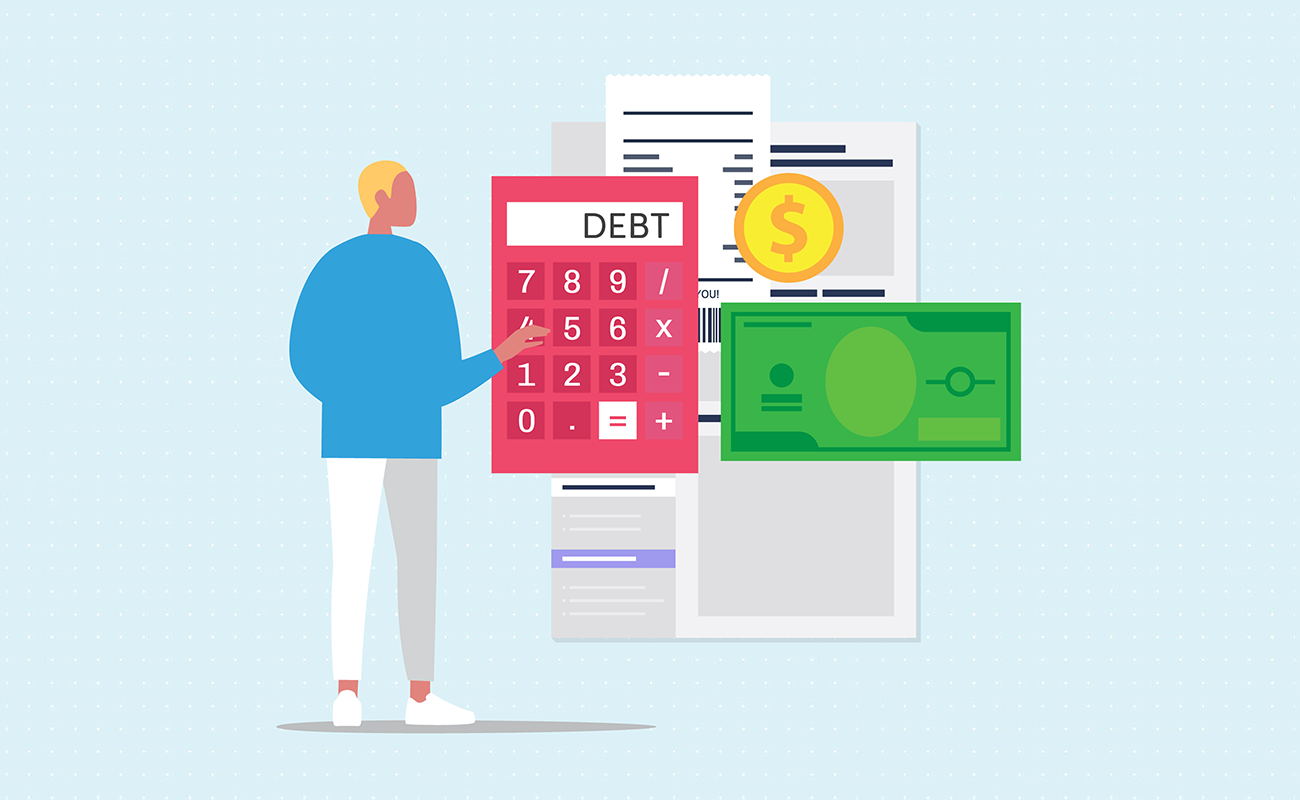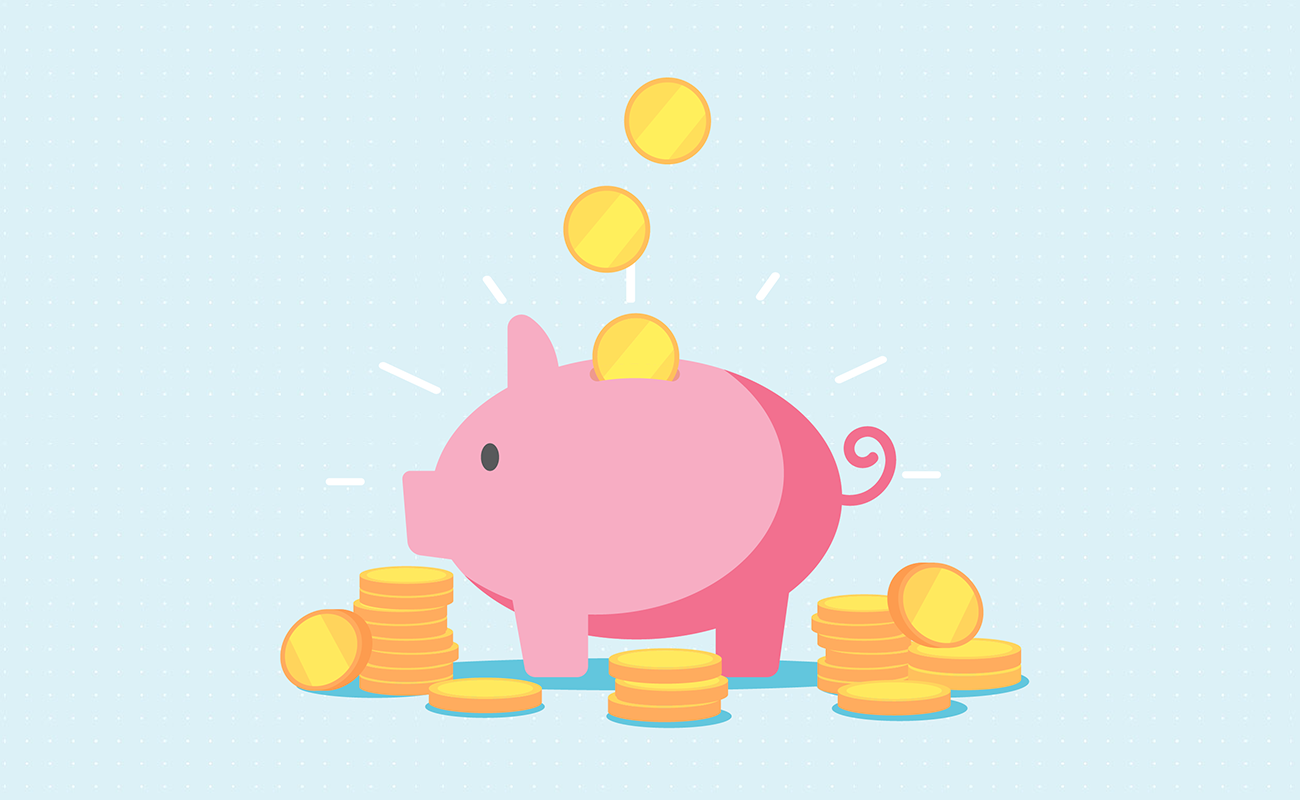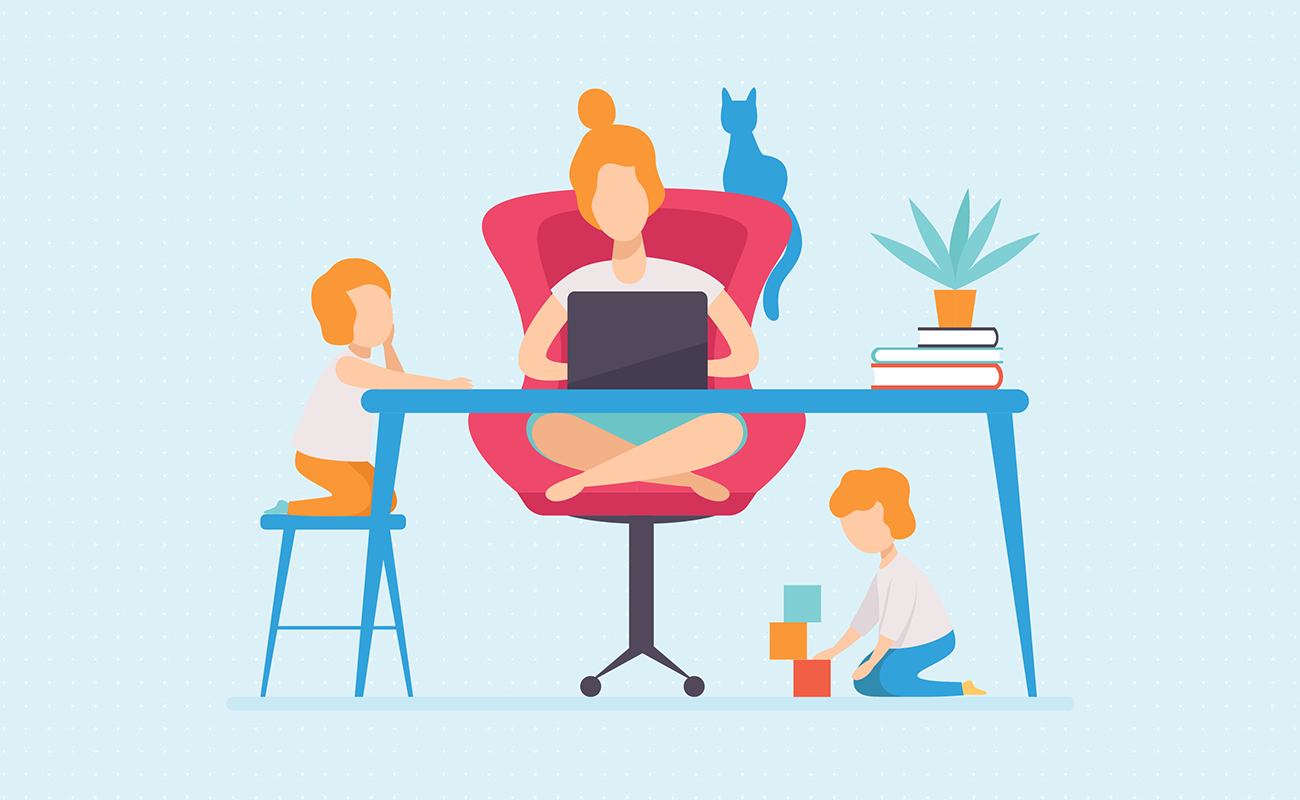Debt Investment
 Debt Payment Calculator
Debt Payment CalculatorUse this calculator to figure when a given debt will be paid off along with how much interest you will spend on the debt & the average monthly interest.
Calculations update automatically when any variable is changed. The calculator will inform you to increase your payment amount if payments are insufficient to cover the interest expense.
Making declining minimum payments stretches debt out over many years, costing the borrower a lot of stress and unneeded interest expense. Fixed debt payments enable you to pay off debts much quicker.
Guide published by Jose Abuyuan on January 14, 2020
In recent years, many Americans have been struggling with consumer debt. According to the U.S. Census Bureau, credit card debt for the average U.S. household hit $6,849 in December 2018. In September 2019, data from the Federal Reserve Bank shows that total U.S. credit card balances went as high as $443.96 billion.
It’s easy to fall into debt. Apart from overspending, others incur debt because of medical emergencies or going through a divorce. Once the bills pile up, it’s extremely difficult to recover.
Fortunately, there are plenty of strategies you can employ to clear your balance. What you need to do is organize your debt records and make concrete steps to reach your goal.
Where do you start? Here are effective debt payment steps you should do now.


Getting organized is the first step to conquering your debt. Make a list of accounts you have and how much you owe. Write down everything from mortgages, student loans, auto loans and credit card debt.
Include balances, interest rates, and minimum monthly payments. Gather all your billing statements and check if you have missed payments. Make sure to review your credit report to see if your credit history adds up. If you find any errors, you should contact the credit bureau to dispute the information.
Knowing all these details ensures you do not forget any unpaid balances. It can even improve your credit score to qualify for future loans. Ultimately, being well-informed will help you create an effective plan to conquer your debts.
Start monitoring all your expenses. When you know where your money is going, it’s easier to control your spending. Then, create a realistic budget and stick to it. List down budget categories so you can track how much money is going to each group.
For instance, let’s say your budget categories are gas, housing bills, food, and leisure. If you spend a large percentage of your salary on food and leisure, it’s time to cut down on those expenses. All the extra money can then go towards paying your debt.
Of course, controlling your expenses will require adjustments. Evaluate your lifestyle and make changes you can commit to. Once you are serious about saving, it’s easier to let go of surpluses.

Consider cutting your cable, unused gym membership, magazine subscriptions and other expensive memberships. You should also avoid costly online shopping that eat up a huge portion of your funds.
Once you’ve figured out your budget, open an emergency fund. Put away monthly savings (even small amounts will do) and never touch it. So when the time comes, you don’t have to borrow money to cover emergency expenses.

Make use of your budget to pay out your balances. Paying the monthly minimum is not enough to get you out of debt. It may take you a long time, even more than ten years, if you only pay the minimum.
To clear out debt faster, you need to make extra payments whenever you can. This also reduces your overall interest cost. To give you a better idea, the table below shows how paying extra can clear out your balance faster.
Debt principal balance: $6,000
Annual percentage rate: 14%
| Debt | Minimum payment | Pay $100 more |
|---|---|---|
| Monthly payment | $250 | $350 |
| Total amount to principal | $6,169 | $6,266 |
| Total interest | $1,081 | $734 |
| Est. Pay Off Time | 2 years and 5 months (29 months) | 1 year and 8 months (20 months) |
Explanation: If you keep paying $250 each month, it will take you 2 years and 5 months to completely pay your balance. But if you pay $350 per month, you can remove 9 months off your payment time. You also save $347 in interest if you pay $350 every month.
Make a debt payment plan that works for you. This means following a strategy that helps motivate you to reach your goal. To create your own payment plan, take note of these steps:

Once you have your payment plan in place, start implementing it. The next step is to aim for consistency. Make sure to pay any extra amount towards your focus debt.
Meanwhile, don’t forget to send monthly payments to your other accounts. You can organize this by setting an auto debit feature with your bank. That way, you’re sure all your accounts get the minimum payment every month.

Automating your payments will save you a great deal in penalty fees and interest rate increases. Remember: timely payments keep you from incurring further debt.

To get out of debt, you must avoid creating more debt. You can do this if you stop using your credit card. Pay in cash or use a debit card instead. Too often, we are tempted to buy things beyond our means. Using your credit card will only increase the balance.
If you think closing your credit accounts will help you, then do so. Others keep their credit cards stored away so they don’t bother with them. Out of sight, out of mind.
Whatever strategy you choose, what matters is making concrete moves to accomplish your goal.
Credit cards are a lot harder to pay off with a higher annual percentage rate (APR). On the other hand, lower interest rates ensure your balance incurs less debt per month. This also means more of your payments go to your principal instead of the interest. Ultimately, it will help you pay your credit card debt sooner.
How do you lower your interest rates? First, you can call your creditor to negotiate for a lower rate. In a U.S. News article, Conor Richardson, CPA and author of Millenial Money Makeover encourages credit card holders to ask for lower rates. He states:
“Credit card companies know that losing customers is very expensive for them, so leveraging that knowledge provides you with some room for negotiation.”
Another option is to transfer your credit card balances to a 0 percent APR credit card. This ‘balance transfer credit card’ offers a temporary zero percent interest rate on balance transfers. This way, you can steer clear of interest rates for 9 to 21 months. During this period, make sure to pay as much money towards your balance. It will help reduce your debt faster.

Apart from spending less, finding ways to increase your funds will help you get out of debt.
You can start by selling valuable items or putting up a garage sale. People do freelance jobs for extra income, while others clock in overtime work to increase their salary. Some even bake cakes and pastries on weekends for their clients. Whatever you do, make sure it works for you.

If you decide to get a second job, it shouldn’t affect your main source of income. Avoid it if the opportunity cost takes more from you. Always prioritize your main job.
Once you have your strategies in place, identify how you got into debt. Moving forward, this can help prevent the same situation in the future. Moreover, prepare yourself for challenges. If an emergency situation keeps you from paying your debt, it’s alright. Just make sure to resume your debt payment plan as soon as you can.
Worrying about debt can feel paralyzing. It robs you of peace of mind and motivation. But if you start making steps to address it, you’ll feel more confident about conquering your debts.
For more information on how to reduce credit card debt faster, visit this page.
Jose Abuyuan is a web content writer, fictionist, and digital artist hailing from Las Piñas City. He is a graduate of Communication and Media Studies at San Beda College Alabang, who took his internship in the weekly news magazine the Philippines Graphic. He has authored works professionally for over a decade.